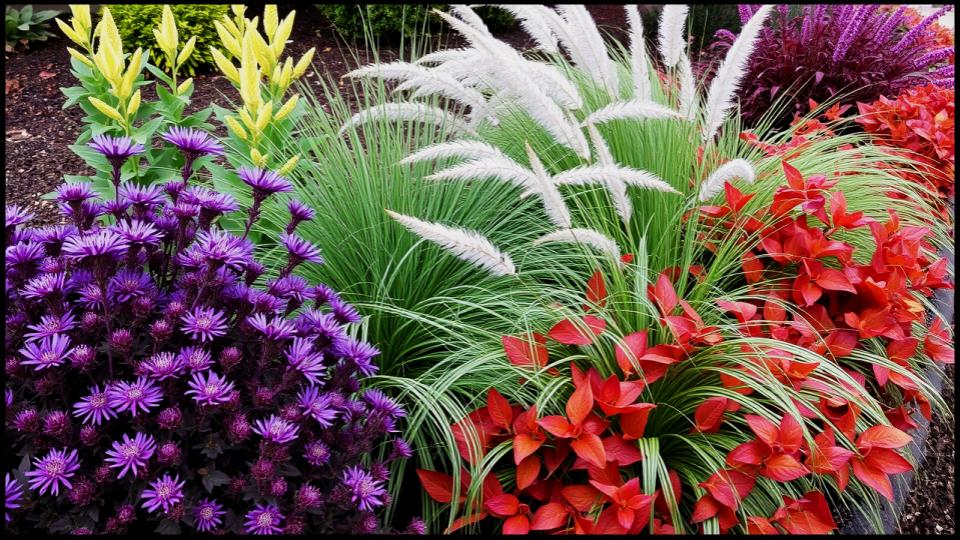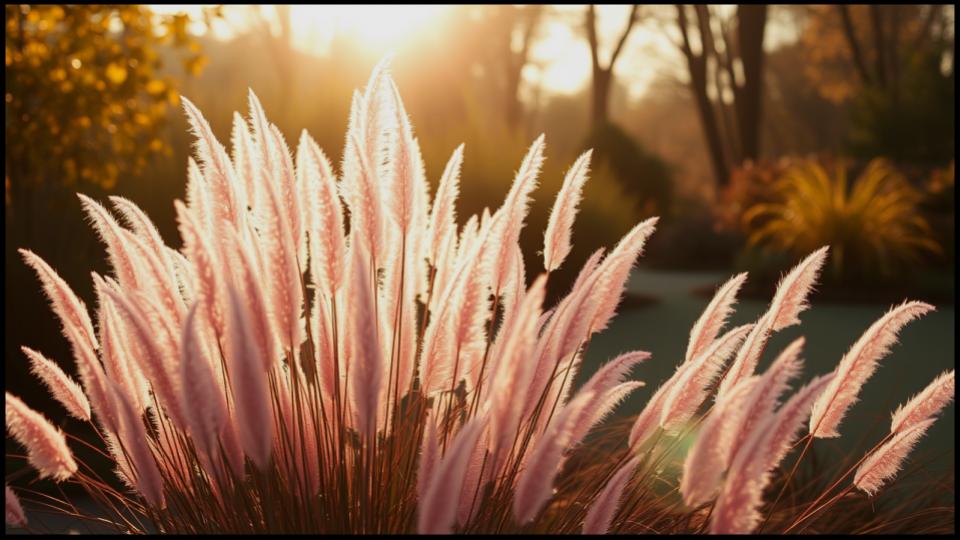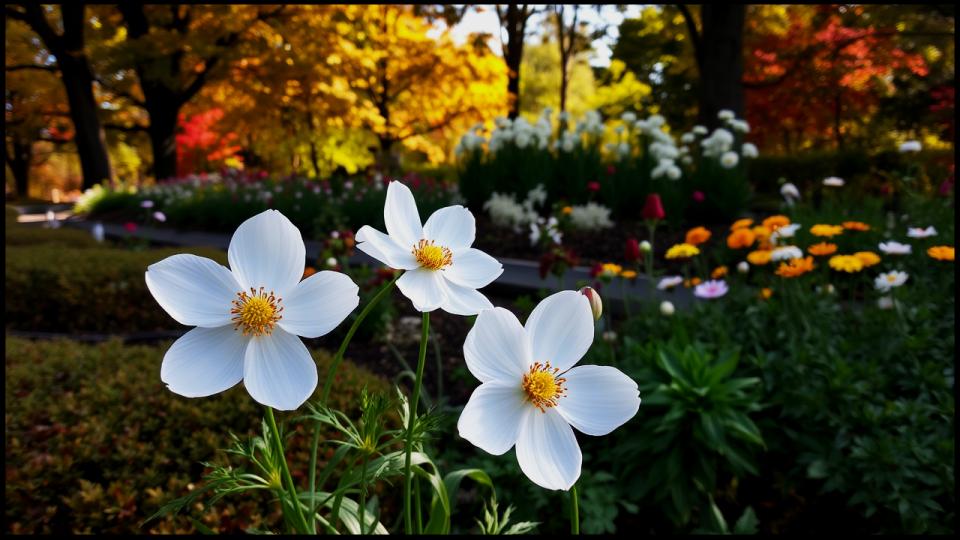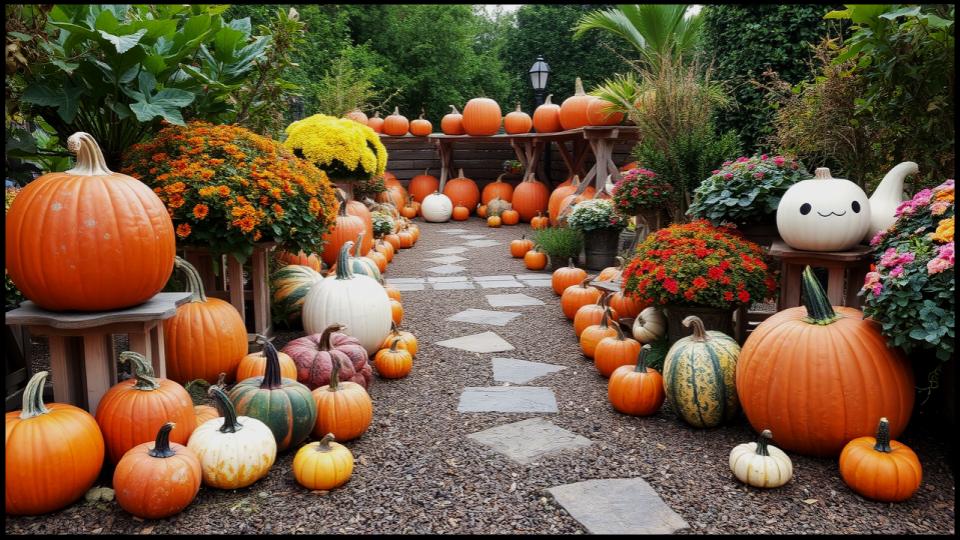
As the vibrant greens of summer recede, a quieter, more profound beauty emerges in the garden. This is a season of rich textures and jewel-toned hues, a final, magnificent crescendo before the hush of winter. Achieving spectacular fall garden color isn’t about a frantic last-minute overhaul; it’s about a thoughtful selection of plants that hit their stride as the air turns crisp. Many gardeners default to the classic chrysanthemum, but a truly breathtaking autumn landscape weaves together a tapestry of foliage, flowers, berries, and grasses. This guide will walk you through 12 simple, yet elegant, ways to create that layered, sophisticated look. Let’s get started.
Key Takeaways for a Stunning Autumn Garden
Here are a few core principles for creating a garden that shines all autumn long:
- Think Beyond Flowers: Brilliant fall foliage from perennials and the textural grace of ornamental grasses are just as important as late-season blooms.
- Embrace Cool-Weather Annuals: Pansies, violas, and ornamental kale provide instant, reliable color that can last until the first hard frost.
- Plant for Pollinators: Many fall perennials like Asters and Sedum provide a critical late-season food source for bees and butterflies.
- Plan for Structure: Incorporate shrubs that offer colorful autumn berries or striking foliage to provide a beautiful backdrop for your flowering plants.
1. Embrace the Enduring Charm of Asters
While chrysanthemums are a fall staple, I find that asters bring a wilder, more organic elegance to the autumn garden. These daisy-like jewels bloom in a profusion of purples, blues, pinks, and whites, continuing their display well into October. They are absolute magnets for late-season pollinators, bringing your garden to life with the buzz of bees. A common mistake I see is planting them too far back in the border earlier in the season; give them a prominent spot where their fall fireworks can be truly appreciated. Look for varieties like the ‘Purple Dome’ New England Aster for a compact, mildew-resistant option.
2. Weave in the Textural Magic of Ornamental Grasses
If there is one secret to a sophisticated garden design, it’s texture, and nothing delivers it better in the fall than ornamental grasses. Their feathery plumes and graceful, arching blades catch the low autumn light in the most spectacular way. In my own garden, the soft, hazy look of Pink Muhly Grass (Muhlenbergia capillaris) creates a stunning pink cloud that stops visitors in their tracks. For a more upright form, Switchgrass (Panicum virgatum) offers beautiful fall color and persistent structure. They require very little care and provide multi-season interest, making them one of the hardest-working plants in any border.

3. Rely on the Rich Foliage of Heuchera (Coral Bells)
For season-long color with almost zero effort, nothing beats Heuchera. While they do send up delicate flower spikes in spring, their true power is in their mounding foliage. Modern cultivars offer a staggering range of colors, from the deep, glossy purples of ‘Dolce Wildberry’ to the warm, amber tones of ‘Caramel’. I love to plant them in drifts along a border’s edge or massed in containers where their vibrant leaves can spill over the sides. They are one of my go-to solutions for adding a splash of rich, persistent color to shady or semi-shaded spots, a tip often shared by landscape designers.
4. Plant a Patch of Cheerful Pansies and Violas
Don’t underestimate the humble pansy! These cool-weather annuals are powerhouse performers for extending your garden’s charm. As your summer annuals fade, tucking in pansies and their smaller cousins, violas, provides an instant refresh. They thrive in the cooler temperatures of fall, often blooming right up until a hard freeze. For a truly designer look, plant a single, bold color in a tight grouping rather than a random mix. The deep, velvety tones of purple, burgundy, and orange are particularly lovely for autumn garden ideas.
5. Introduce the Bold Shapes of Ornamental Cabbage and Kale
For pure drama and texture, it’s hard to beat ornamental cabbage and kale. Their ruffled or crinkled leaves form large, rose-like heads in shades of cream, pink, and deep purple. A word of advice from my own experience: their color actually intensifies after a light frost, making them more beautiful as the season progresses. Use them as striking focal points in container arrangements or as a temporary, sculptural edging for a garden bed. They pair beautifully with the fine texture of grasses and the rich hues of pansies.
6. Count on the Steadfast Beauty of Sedum
If you need a plant that looks good from spring through winter, look no further than upright sedums. ‘Autumn Joy’ is a classic for a reason, but there are many wonderful cultivars like ‘Matrona’ with its dusky pink flowers and sturdy, purple-tinged stems. Their large, broccoli-like flower heads start as pale green in summer, transition to pink, and finally age to a beautiful coppery-red in fall. The Chicago Botanic Garden highlights their value not just for their late season blooms, but also for the structure their dried seed heads provide in the winter garden.
7. Don’t Forget Shrubs with Dazzling Fall Berries
Flowers aren’t the only source of fall color. Certain shrubs put on a spectacular secondary show with brightly colored berries. One of the most stunning is Beautyberry (Callicarpa americana), which features clusters of almost impossibly vibrant, iridescent purple berries along its branches. For classic red, Winterberry (Ilex verticillata), a type of deciduous holly, is absolutely breathtaking, especially after its leaves drop. These shrubs provide crucial food for birds and add a wonderful structural element to the landscape.
8. Plant a Tree for a Glorious Canopy
Even a small garden often has room for one thoughtfully chosen tree. The canopy of a tree with brilliant fall foliage can define the entire autumn experience in your yard. While Maples are famous for their display, don’t overlook smaller, more manageable options. A Serviceberry (Amelanchier) offers not just brilliant orange and red fall color but also lovely spring flowers and edible summer fruit. For a truly unique golden hue, the Ginkgo tree is unparalleled, dropping its fan-shaped leaves all at once to create a magnificent golden carpet.
9. Tuck in Elegant Japanese Anemones
Just when you think the flower season is over, Japanese Anemones begin to dance. Rising on long, wiry stems, their simple, poppy-like flowers in shades of white and pink seem to float above the late-season garden. They bring a sense of movement and grace that is truly special. I’ve found that varieties like ‘Honorine Jobert’ are particularly luminous in the dappled light of early evening. They are a sophisticated choice for adding height and elegance to a semi-shaded border.

10. Reconsider the Goldenrod
Modern, cultivated varieties of Goldenrod (Solidago) are a far cry from their wild, allergy-inducing cousins. These well-behaved cultivars, like ‘Fireworks’, produce dramatic, arching sprays of brilliant gold that light up the garden and support pollinators without spreading aggressively. According to the Penn State Extension, these garden-worthy varieties are essential for a vibrant, ecologically friendly fall landscape. Pairing their bright yellow with the deep purples of asters is a classic and foolproof combination.
11. Create Stunning Fall Container Displays
One of the easiest ways to get instant impact is with a beautifully designed container. This is your chance to play with combinations and create a stunning focal point for a porch, patio, or entryway. I like to use the “Thriller, Filler, Spiller” method: a tall ornamental grass or celosia for the thriller; colorful heuchera, mums, or ornamental kale as the filler; and trailing ivy, calibrachoa, or vinca vine as the spiller. Using a large, elegant pot makes a much bigger statement than several small ones.
12. Artfully Place Pumpkins and Gourds
Finally, don’t be afraid to integrate the harvest itself directly into your garden beds. A curated collection of pumpkins and gourds in unique shapes and colors can be a wonderful, temporary addition. Instead of lining them up stiffly, try tucking a Cinderella pumpkin amongst the fading stems of your hosts or placing a cluster of uniquely shaped gourds at the base of a container. This blurs the line between garden and decoration, creating a seamless and celebratory autumn scene.

A Final Flourish for the Season
As you can see, creating a garden that remains vibrant deep into autumn is not only possible but also deeply rewarding. By looking beyond, the expected and embracing a rich palette of foliage, texture, and late season blooms, you can compose a garden that is truly your own. It’s a wonderful opportunity to collaborate with nature, creating a final, beautiful display that celebrates the unique light and mood of the season. So, this fall, try adding a feathery grass or a jewel-toned berry bush, and watch as your garden transitions with grace and spectacular style.
